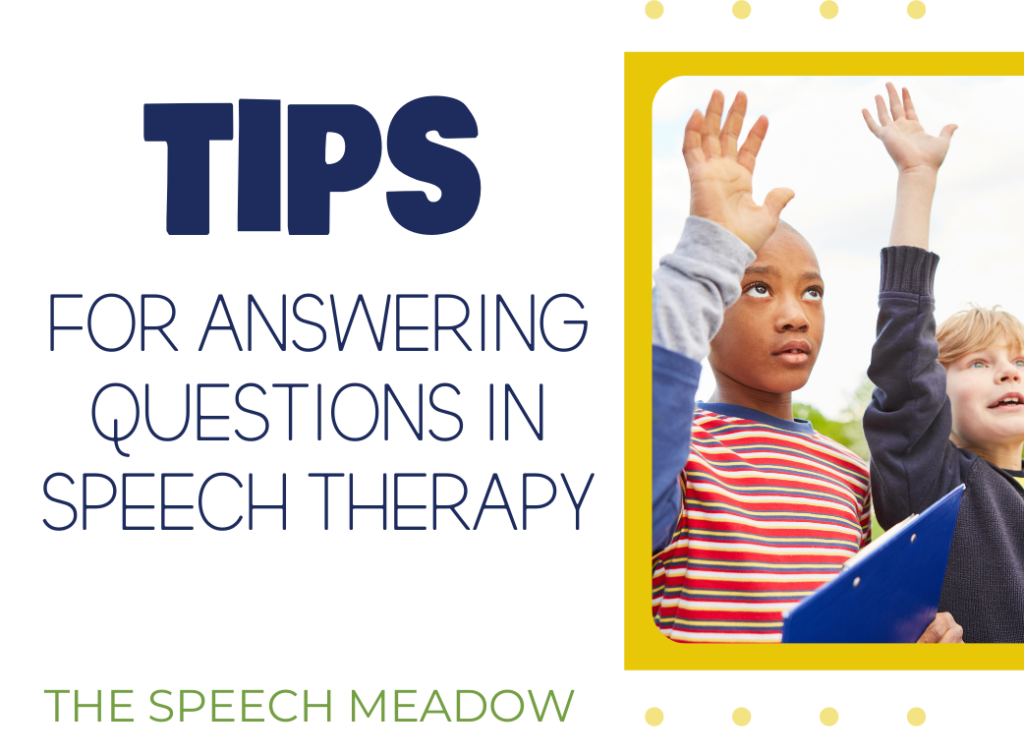Speech therapists tend to work on goals addressing answering questions a lot! Generally, people answer questions to share information, for clarification, demonstrate understanding, or to teach. It can be frustrating for the therapist, speech-language assistants, and the children to work on these goals. Why? Well, answering questions may not be as straightforward as we think. Some therapists start targeting them when the children are not developmentally ready. The child may not have enough vocabulary to answer. The child may not have the sentence length or syntax to answer the question appropriately.

Be sure that the child has the vocabulary/background knowledge to answer.
If the child doesn’t have the words to answer, then are they going to be able to answer? No. In this case, you are then working on two goals simultaneously. How do you measure progress accurately? Do they have the background knowledge? No. Then how can your student respond correctly? This is why picking appropriate materials is critical.
Pick activities and vocabulary that the child knows. Use toys and activities that the child loves. Children tend to have better-developed vocabulary and knowledge to answer questions. If you use themes in therapy or in a class (push-in therapy), wait until the child has had significant exposure to the vocabulary and information before targeting questions. For ideas on how to create a vocabulary-rich classroom environment, go here.
Start with concrete questions before moving to less concrete questions.
It is easier to answer the here and now questions (e.g. What’s this?) than questions that require the child to infer or analyze the information. Start with what, who, where before you move on to why and how. Suppose you target less concrete who, what, or where, then think about your goals for that activity. For example, if you are working on answering questions related to story grammar, then you are using questions to check for understanding.
Use visuals.
Again especially at the start, make sure that you are using visuals. You will probably need visuals about how to answer and visuals to help the student answer the actual questions. The visuals will help the child more accurately respond. As the child is more successful using visuals, you can start to fade the visuals out.
Click here for access to some visuals to help your students. What are your best tips?
